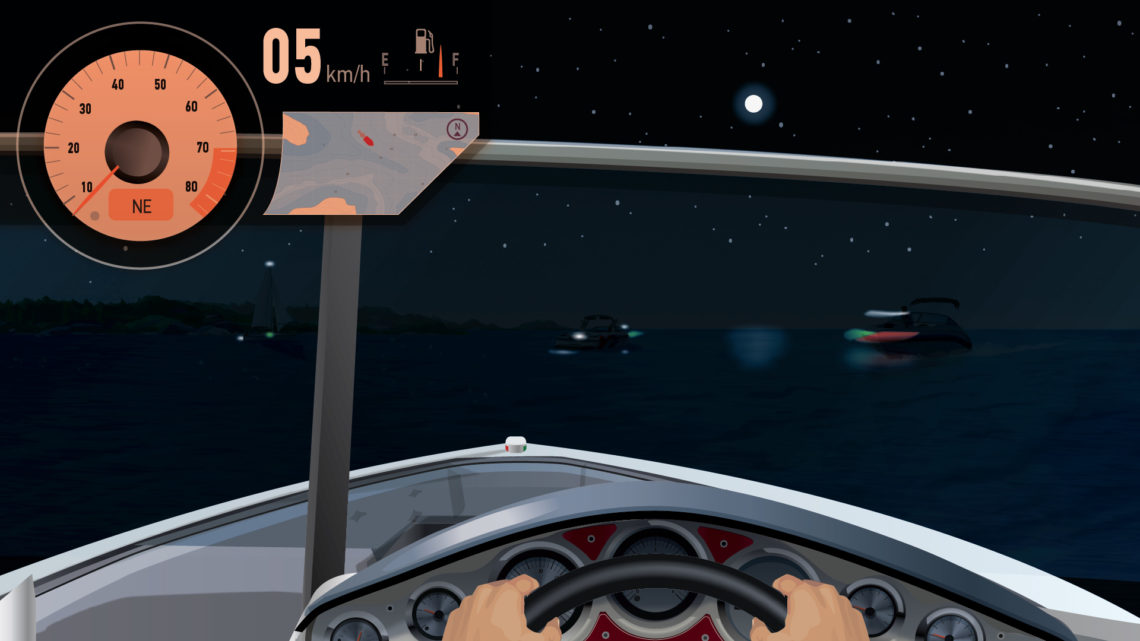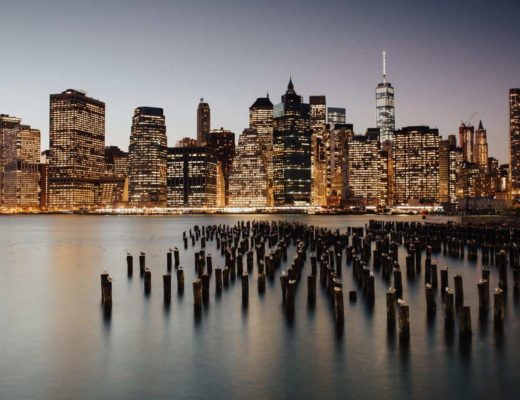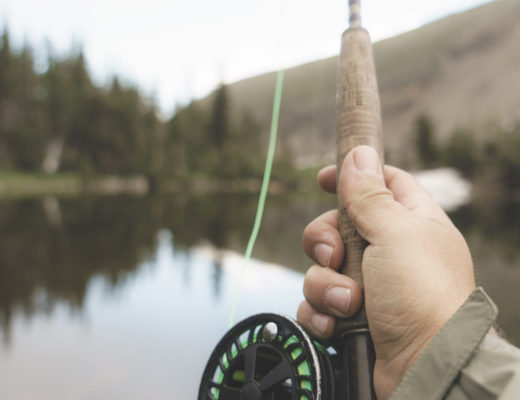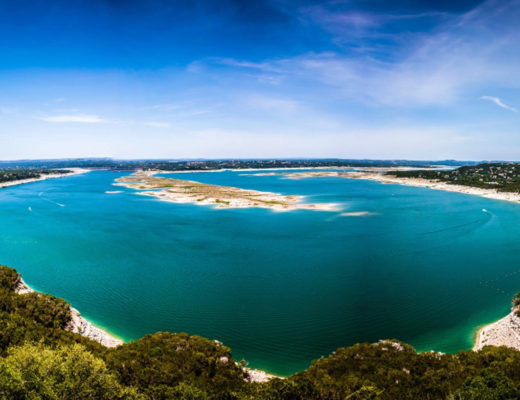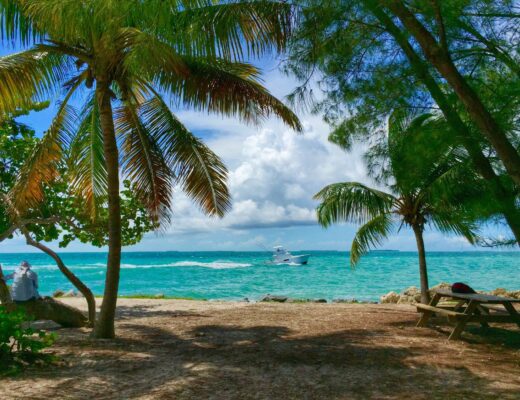This weekend, boaters in southern Ontario, Canada were rattled by two fatal boating collisions. In both incidents, there were boats involved that were not displaying their night-time navigation lights, making them, essentially, invisible on the water.
The Dangers of Night-time Navigation
It’s vitally important for boaters to keep in mind the dangers of night-time navigation. Waterways aren’t like streets or highways, with their fluorescent reflective signage and designated laneways lit by powerful street lights. They’re dark, unlit, and littered with ever-changing hazards, including other boats and waterway traffic that may cross your path.
Operating your boat at night without any navigation lights is comparable to being a black cat crossing a country road in the middle of the night. You will be completely invisible.
So if you’re operating at night always be sure to turn on your nav lights, and operate at a reasonable speed for the conditions and time of day. Because, even if you remembered to turn on your lights, it doesn’t mean that other waterway users did the same.
Boat navigation lights aren’t complicated, you just have to remember a few key points so that you’ll know how to react on the water when you encounter another boat at night.
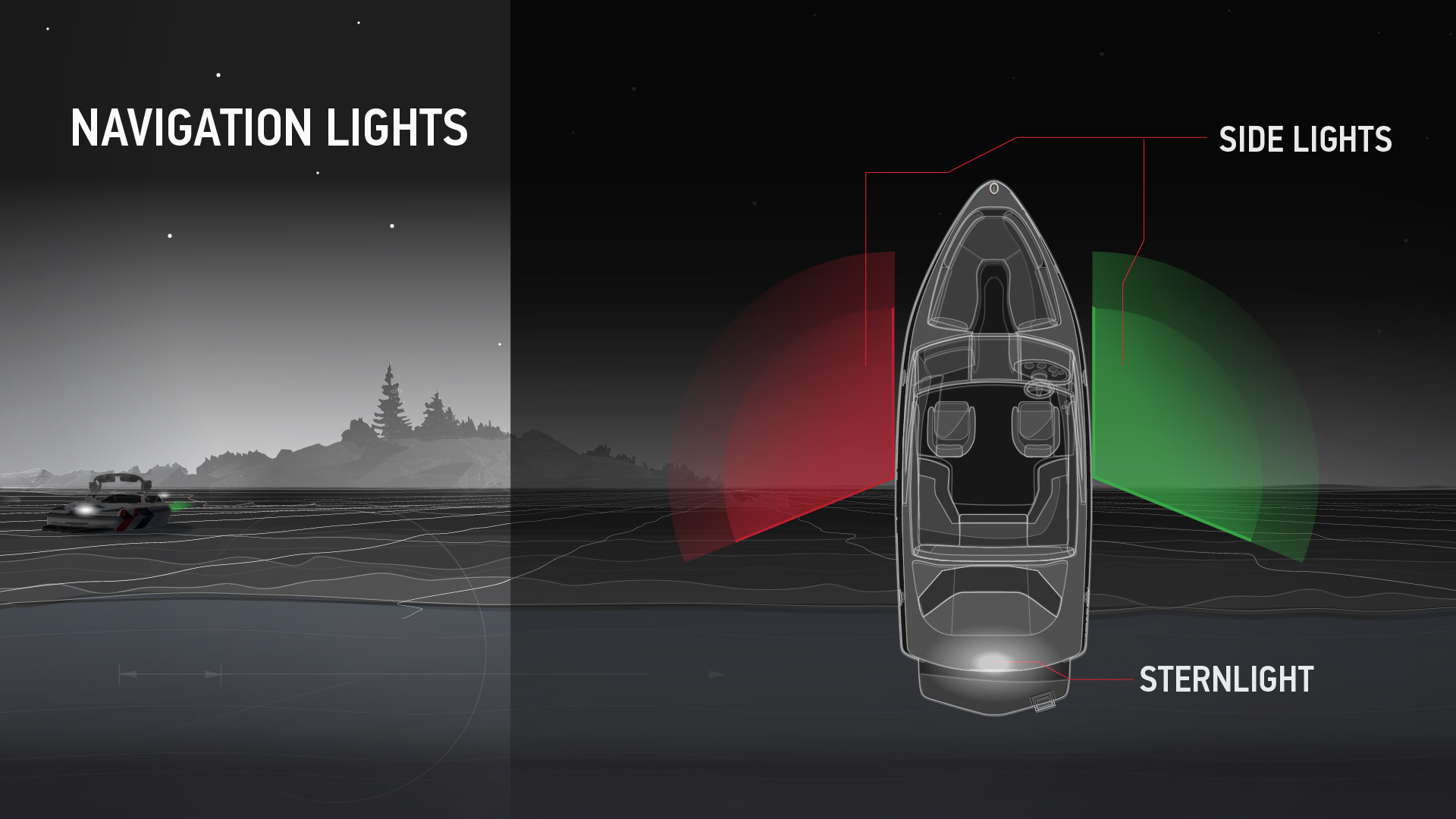
Boats are equipped with the following main navigation lights:
Just like when you’re operating a car, green means go. If you see a green light at night, you have the right of way. But proceed with caution and be sure that the other boat is yielding before you continue on your course.
Port Side Lights: These lights are red in colour, and indicate that you’re approaching the port (left) side of another boat.
Again, just like when you’re driving a car, red means stop. If you see a boat’s red port light you do not have the right-of-way and you’ll need to yield to the other boat. Typically boats who do not have the right-of-way should alter their course to starboard (right) if a safe route exists.
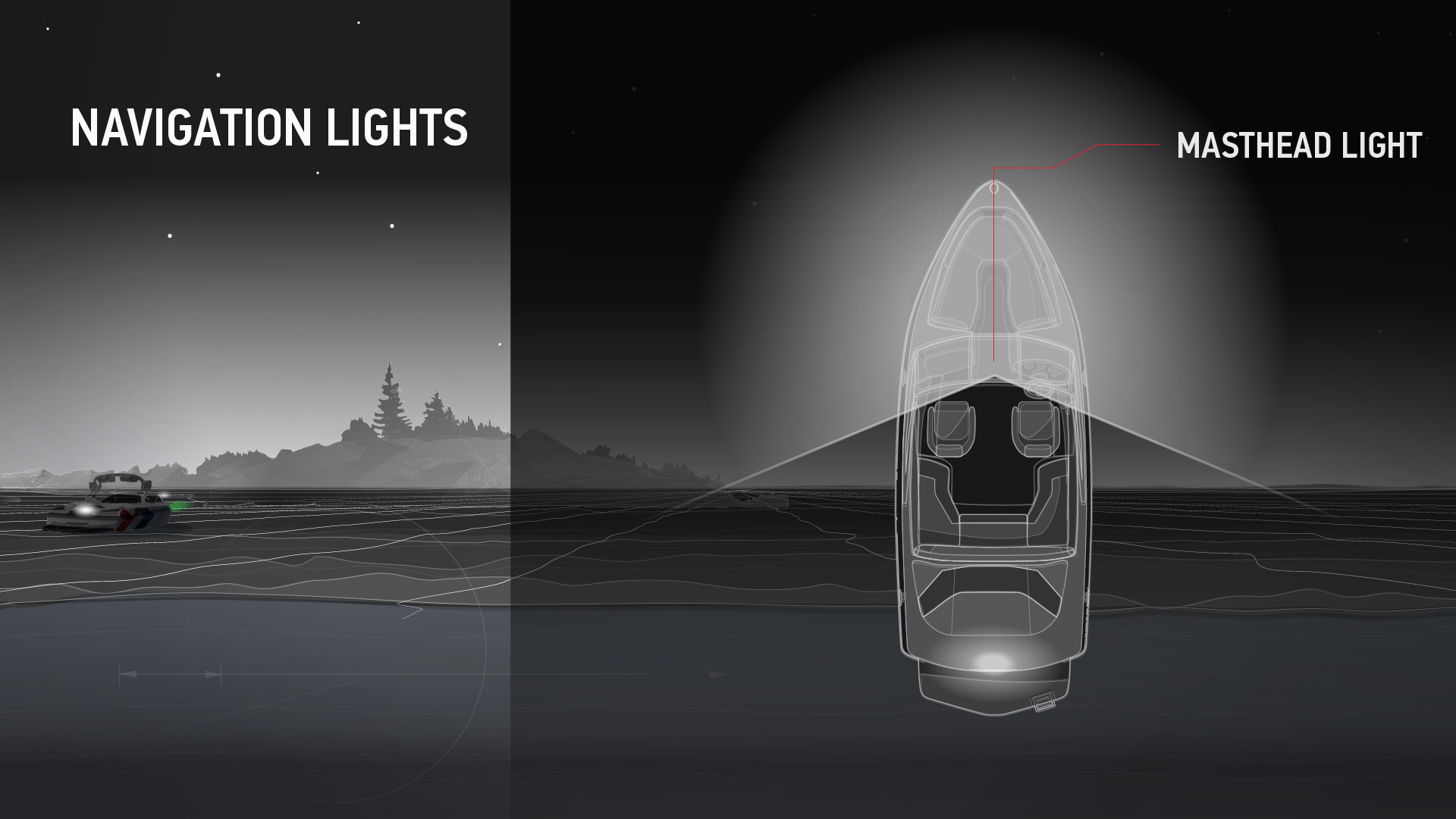
White Lights:
Masthead Lights: These are bright white lights affixed to a boats mast (or as close to that area as possible)
Stern Lights: These are also white lights affixed to the stern of the boat.
Human-powered boats: Human powered boats won’t be equipped with the same coloured-port and starboard side lights as powered boats, making them harder to see. They are, however, required to display a white light that is visible from all sides.
What Do I Do if I See a White Light at Night?
This one is easy. If you see a boat displaying a white light you do not have the right of way. A white light indicates one of the following:
- You’re approaching a boat head-on
- You’re approaching a boat from behind
- You’re approaching a human-powered boat (like a canoe or kayak)
You MUST slow down, and alter your course to give the other boat the right of way in ALL of the above scenarios. Ideally you slow down to a no-wake speed, and alter your course to the starboard side if a safe route exists.
So overall, if you’re boating at night, turn on your navigation lights and remember the following:
Green = Go (proceed with caution)
Red = Stop (slow down and yield the right of way)
White = Stop (slow down and yield the right of way)
Be safe out there boaters!
